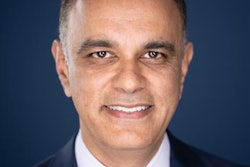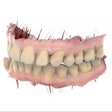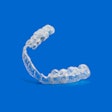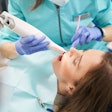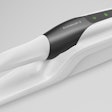Dr. Meena Barsoum returns this week with another clinical tip courtesy of CDOCS that is sure to help your dental skills grow and boost your dental practice.
This week, the focus is on imaging and how 3D imaging can work in conjunction with 2D imaging to solve riddles in your practice. You can watch the video below, as well as read the transcript, for Dr. Barsoum's tips. Additionally, learn more about CDOCS' memberships and CDOCS' hands-on workshops.
Video transcript
"Today, I'd like to talk about 3D imaging and how we use it in correlation with some of the two-dimensional images we take in our practice.
"So this patient presented earlier this week and my hygienist took a routine periapical of the upper left first molar just because it's been previously root canal-treated. We want to make sure everything is looking OK, and she did notice on the mesial buccal root what appeared to be a horizontal root fracture of that root.
"Now there was a slightly deeper probing in the area, but nothing out of the ordinary, no symptoms. Again, the patient didn't present with any symptoms at all. So we decided to take a 3D image to help us correlate the findings with a three-dimensional scan. Using our Galileo scanner, and this is in the Dexus software, we captured a 3D image. And you can see here in the longitudinal and the cross-sectional views, I'm going to go through the volume step by step looking at the mesial buccal root.
"And as I'm going through the volume, I notice there's likely a periapical scar on that mesial buccal root. The patient hasn't had any symptoms, nothing that we're really concerned about, but notice I'm not seeing any signs of that horizontal or vertical root fracture on the mesial buccal. When I do get to the palatal root, you can start seeing the PDL of that palatal root is in the same orientation as what appeared to be that horizontal fracture. So what was happening in the two-dimensional image is the PDL of the palatal root was being overlaid on the mesial buccal root, making it look like there was a fracture, but it really wasn't there.
"So, thankfully with 3D imaging, we're able to get that proper diagnosis and make sure that we're not treating something that maybe doesn't need any treatment."






